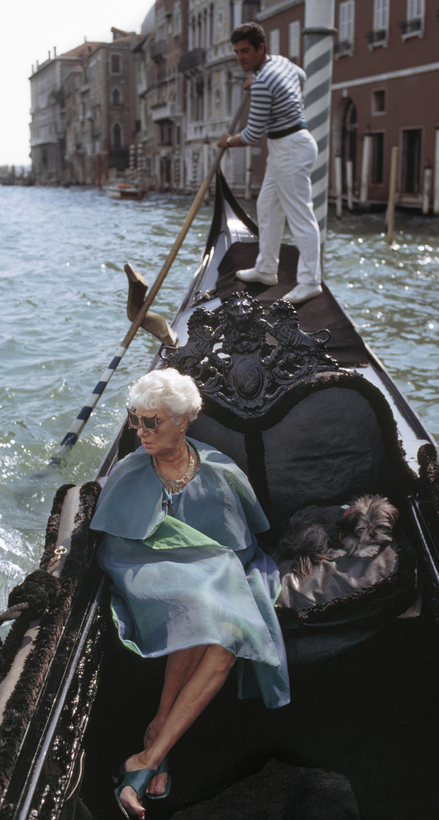When Peggy Guggenheim moved to Venice, in 1948, the city wasn’t the floating playground for contemporary art that it is today. No billionaires had parked their collections there, no blue-chip sales directors were spending the Biennale preview week working up a sweat on the Bauer Hotel dance floor. In that year of ’48, with the entire European continent slowly recovering from the Second World War and Greece embroiled in a civil war, Guggenheim was invited to show her collection at the Greek Pavilion of the exhibition. She filled the walls with more than 100 works by 73 artists, including American newcomers Jackson Pollock, Mark Rothko, and Alexander Calder, a move that confused some and exhilarated others. “I think Peggy brought a new kind of energy to Venice, which was very much needed in the postwar years,” says Karole P. B. Vail, director of the Peggy Guggenheim Collection since 2017. (Before that, Vail was a curator at the Solomon R. Guggenheim Museum, in New York City, for 20 years.)

The Greek Pavilion exhibition is one of a few critical moments under examination in “Peggy Guggenheim: The Last Dogaressa.” Curated by Vail and Gražina Subelytė, it showcases the work Guggenheim acquired from the late 1940s until her death, in 1979. “Even when she had firmly established her collection,” says Vail, “she didn’t just stop here and move her collection into her home. She went on actively acquiring works in a very dynamic way.”
Most of the museum’s pre–World War II collection, which includes Picasso’s On the Beach and Duchamp’s Nude (Study), Sad Young Man on a Train, will remain in the museum’s palazzo (Guggenheim’s former home). The more modern galleries across the garden address the milestones of Peggy’s Venetian life: one space is dedicated to the 1948 Biennale, another to an exhibition of contemporary sculpture she organized in 1949. The rest of the galleries contain work by artists Peggy championed: the Italians Emilio Vedova, Marina Apollonio, and Giuseppe Santomaso; the English sculptors Henry Moore and Kenneth Armitage; and the Japanese-American artist Kenzo Okada. A selection of Peggy’s scrapbooks—full of press clippings, photographs, and notes—has been unearthed and provide a glimpse into the burgeoning art world of the moment.
Empire of Light, the René Magritte masterpiece that Peggy acquired in the 1950s, will also be on display. Vail, who is Guggenheim’s granddaughter, remembers encountering the painting during visits to the palazzo as a young girl. “I always found it so fascinating that the painting could depict both night and daylight,” she said. “It could make you fantasize and travel in your mind.” The experience of spending time with all that out-there artwork, says Vail, was “a wonderful informal education.”
Looking forward, Vail is focused on presenting her grandmother’s art with a fresh perspective. “As a former curator, I’m very excited to be able to move things around and show that the Peggy Guggenheim Collection is certainly not a mausoleum,” she said. “It goes on living.” —Andrea Whittle

